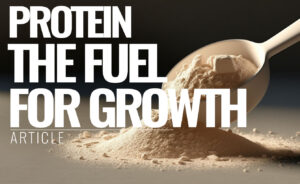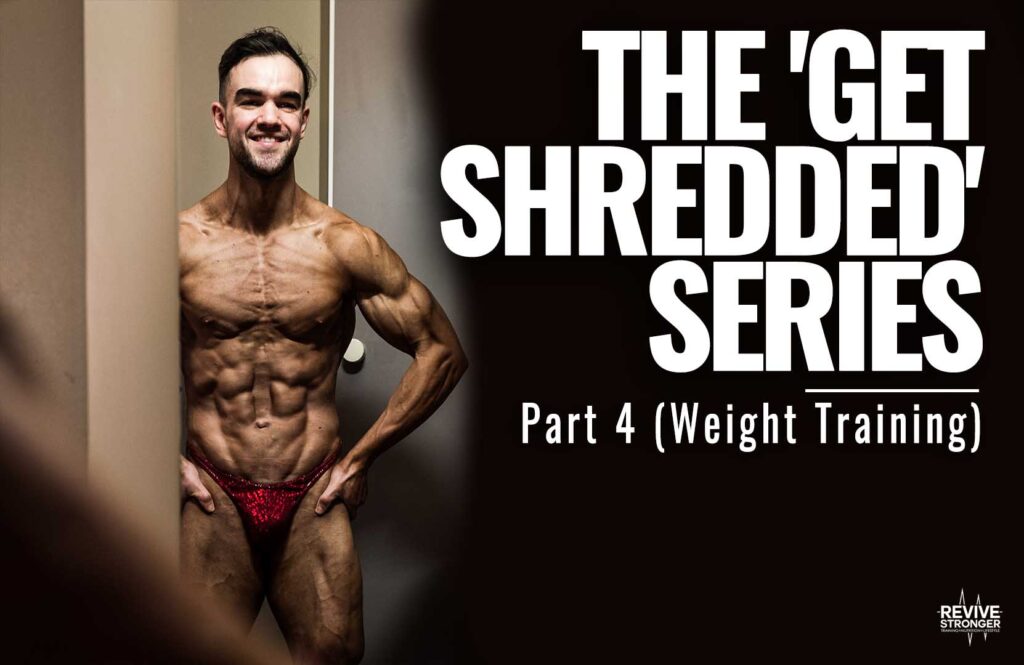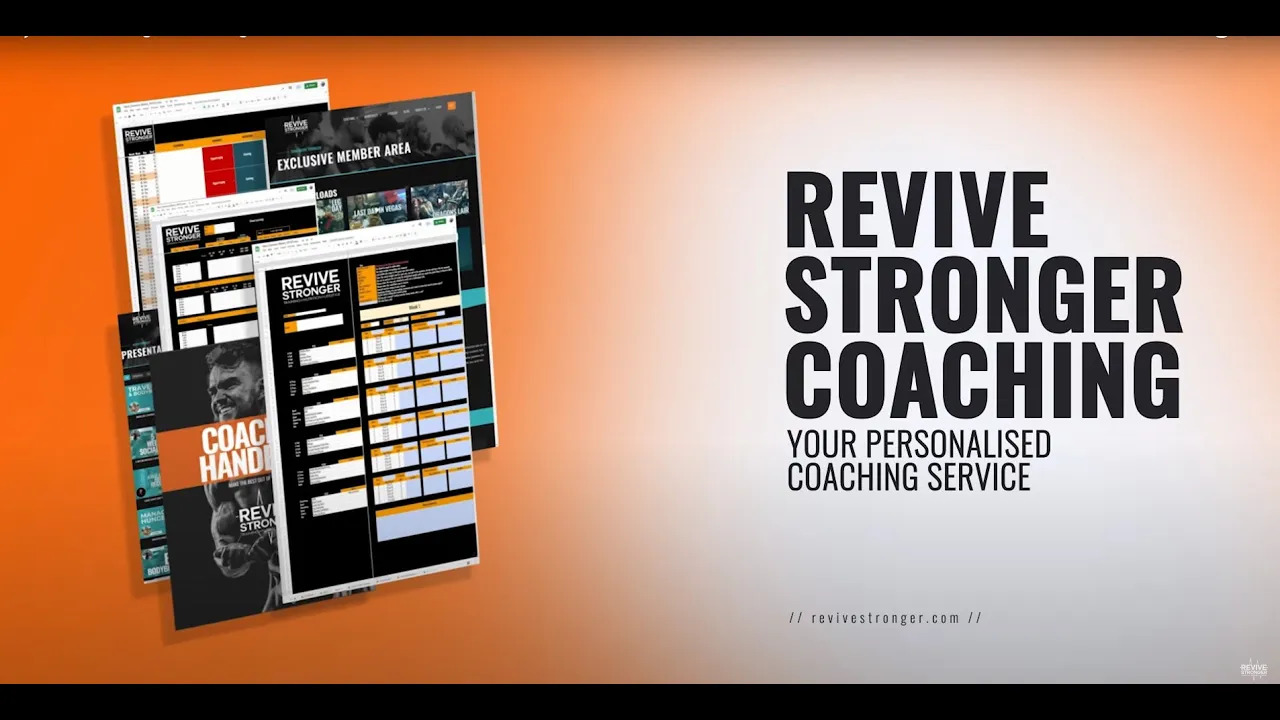
Revive Stronger
The ‘Get Shredded’ Series – Part 4 (Weight Training)

You’re getting really well set up for shreds.
You know what foods you should be going for.
You have cultivated an environment that streamlines your journey for getting lean.
And you now know how sleep can make or break your progress.
But there are so many more things to consider, and I want to get you as shredded as possible, with as much muscle as possible. So today I will be guiding you on how to weight train for fat loss, because I see some barmy things and I am sure many are confused.
“Gotta do the Insanity workout to get jacked bro”
“Straight-sets are for fat boys, tri-sets are where it’s at”
“You gotta sweat, sweat is fat crying”
Those dudes are confused, they need guidance, simply put your workouts are not really there to create fat loss. It sounds counter intuitive, but let your diet do the work, and use your workouts to best secure your muscle, which in the end, will in turn help you get shredded.
[bctt tweet=”There are no fat loss workouts”]
We know that new trainees, the overfat & untrained may see muscle growth while in a deficit, however, if you don’t fall into any of those categories sadly you’re not going to be growing any muscle. This is because you’re in a deficit you are in a net catabolic state (need help creating a deficit, look here).
So we are doing everything in our power to maintain the hard built mass you have. Putting nutrition and training together is the difference between losing weight and transforming your body (Thanks Tom Venuto). Furthermore, one dude who uses the below to create a training programme will see far superior results to someone who just follows a random plan, even when on the same diet.
Table of Contents
Train for Muscle
OK so it might sound like I am back peddling a little bit by saying we should train for muscle, because you’re right in thinking that I said we aren’t going to be growing when eating for fat loss. So why would we train for muscle growth? Surely that is just pointless?

Not at all, in fact it is absolutely vital if you want to keep your hard earned muscle. For example, when I used to work an office job they had a policy for promotions in which they’d only be available every 6 months. Did that mean I stopped working hard because I couldn’t get promoted for most of the year? No, of course not. I worked my ass off, so that when the time for promotion came they had no way they couldn’t give it to me. Just in the same way we train for muscle growth, because that way we are telling our body that this muscle needs to stay, and our body will have to listen, just like my boss.
The reason training is so vital to get right is because total muscle mass is the product of muscle protein balance and that is the result of protein breakdown vs. protein synthesis. Or in other words; if you’re using more protein than you’re growing, you will lose muscle, if you’re growing more protein than you’re using you will grow muscle. Due to our calorie deficit we are unfortunately breaking down a lot of protein, and this is partly why you should increase your protein intake when dieting. However, when we train a muscle group we increase muscle protein synthesis, which decreases the gap between breakdown and growth.
[bctt tweet=”Train for muscle growth when dieting, so your body is forced to keep those muscles”]
The mechanisms for hypertrophy (muscle growth) include mechanical tension, metabolic stress and muscle damage. I talk about these in depth in Get Big, Stay Lean but for now think of these as lifting heavy, getting a pump and doing something different now and then. To maximise our muscular potential, we want to utilise all three of these mechanisms, in a progressive fashion.
The goal when dieting does not change, keep progressive overload at the forefront of your mind, keep challenging yourself, aiming for more reps, weight, or sets. Although I am talking about maintaining muscle mass, I don’t want you to think about it in that way, you’re still going to the gym to improve, and keep telling yourself that.
Furthermore, we would be wise to incorporate these via periodisation as it is always found to be more effective than non-periodised training when it comes to inducing muscular adaptations. Eric Helms et al found Block Periodisation and Undulating Periodisation to be best for well trained lifters, I will be coming to an example later.
We however cannot train exactly as we would when on more food, because our ability to recover is reduced. I’m going to take you through how much you should train, how hard and how often before talking about intensity and tracking progression. Using these I will give you a baseline plan that will best set you up for getting shredded.
How Much?
By how much I mean your training volume. Volume is determined by a combination of sets, reps and total load. The equation to use is:
Training Volume = (reps X sets) X load
Generally we find that as volume increases there is a greater amount of muscle growth, for example Krieger found 40% more growth when multiple sets were placed against single sets. However, like anything you can have too much of a good thing, past a certain point we see diminishing returns with increased volumes. How much you need will depend on multiple factors that you truly will only discover through self experimentation.
Volume is a key determinant of muscle growth, if you’re not doing more than you were a year ago, you’re not growing. And as we pointed out, when we want to safeguard our muscle, we need to train for muscle development. However, when trying to get shredded we do not have the fuel for adding mass, so rather we need to find a training volume that maintains our muscle.
In a study of 70 untrained adults it was found muscle size was maintained with as low as one third of the volume that was required to initially give the adaption. Of course many of us are trained, so this might not be directly useful, however we can predict that we can maintain mass with frequent periods of lower volume training. This will help us recover during a time when our ability to recoup is severely reduced. This can be done through deloads, where volume is reduced heavily, and whereas when you might deload every 5th week normally, maybe when dieting you deload every 3rd or 4th week. Alternatively you could taper your volume for say 2 weeks or so and slowly increase it, in a wave like fashion, the key is we can allow for lower training volumes that will maintain mass and allow us to recover.
Right so we know progressive increases in volume is key to growth, which therefore is important for signally muscle retention. How much do we actually need? Well in a study by Wernbom et al they found that 40 to 70 reps per muscle group per session was the volume that saw best muscle growth. So that is a good starting guideline for us to use, and you will see this put into practice with the programme I provide at the end.
How Often?
During my contest prep I was training with weights 6 times a week, I now however train 5 times a week. However, I think cases could easily be made for training 3 times a week and also 4. What is important is how frequently you train each muscle group and the total volume you are doing.
Wernbom et al found training each muscle group 2 to 3 times per week was the sweet spot when it came to muscle growth, but there is scope that even higher frequencies could be even more effective. By spreading your volume out you can produce a small amount of fatigue more often, making each session of higher quality and allowing you to recover better.
[bctt tweet=”What’s easier to recover from; multiple jabs or one knock out blow?”]
Therefore 2 to 3 times per week is a great starting point, and you can use this with the training volume recommendation to effectively split up your training. This could be:
- Upper, Lower x 2 a week (4 workouts – frequency 2)
- Full Body x 3 a week (3 workouts – frequency 3)
- Lower, Push, Pull x 2 a week (6 workouts – frequency 2)
How Intense?
Here we are talking about intensity, generally we know this as the higher the % of your 1 rep maximum you’re using the higher the intensity. While it is commonly thought there are rep ranges or %s associated with certain adaptations (e.g. 8 to 12 reps means muscle growth) studies have found that both lower and higher rep ranges work in synergy to provide gains, they potentiate one another.
However, remember that volume is a key driver for growth and the use of lower reps or higher intensities will make it harder to achieve greater volumes. I mean which is more doable; squatting 4×10 or 8×5, both give the lower end of the recommended volume (40 reps) but the latter rep and set scheme will likely take close to twice as long. Higher intensities create more fatigue and require much longer rest periods. Yet this doesn’t mean low reps should be avoided, for example you could squat 2×5 on squats and follow that up with 2×10 to give the 40 reps, or even use assistance movements at higher rep ranges to make up the difference.
In a recent systematic review the following recommendations were made for hypertrophy:
- Training for hypertrophy: 6 to 12 using 70 to 80% 1RM
Why this range? Basically, it allows for the best mix of enough reps to provide sufficient volume for growth but also sufficient intensity to recruit musculature. Think you could do really high volumes with very low weights, but the loads are too low to effectively work the muscle.
[bctt tweet=”We could all squat the bar 100 times but it isn’t going to get you jacked.”]
You could also do high loads and recruit close to all the musculature, providing a lot of mechanical tension, but you couldn’t keep this up, the fatigue produced is very high, thus your total volume would be too low. So this isn’t to say reps or intensities above or below this do not contribute to muscle growth, just this range is the sweet spot giving sufficient intensity for mechanical tension and the reps allow for volume to be completed efficiently.
So to best grow muscle you want to focus on that range, but to explore all avenues of muscular growth you do want to utilise high rep, low load and low rep, high load training. That is because these help promote the other muscle growth mechanisms; metabolic stress and mechanical tension. So as you can see every rep range has its place when training for hypertrophy, just we should emphasise some over others.
Go By Feel
When you’re in the gym doing a workout it should be tough, but how tough? That is what I am going to talk about here, you are going to ‘go by feel’. This is important whether training for fat loss, muscle gain or strength, and I like to use the Rate of Perceived Exertion (RPE) Scale to quantity it.
The RPE scale has been re-hashed to a 1 to 10, 10 being absolute failure and 1 being you’re doing nothing. In reality we’re going to be working in and around 7 to 9 most of the time, and rarely going above or below. Without going into too much detail here the reason this is so handy is that allows you to ‘autoregulate’ your training somewhat, you’re not always going to be feeling 100%. For example if you slept awfully and didn’t manage to get a pre-workout meal you might find hitting your programmed weights and reps almost impossible. So instead you would go by feel and find your intensity for that day. Just in the same way if you felt awesome, you could really push for some progress.

The reason going by feel is important is because we don’t want to just go balls to the wall all the time. Many people seem to think hitting failure every set is a must when it comes to training right. That simply isn’t true, however is does have its place, just not every set in every session for each exercise.
If used right it can bolster our muscle growth potential, which in the context of trying to get shredded is important. This is because it increases muscle activation, and so more muscle units and fibres are firing, and can grow. But, and this is a big but, if you abuse failure you are going to do yourself more harm than good, especially when in a calorie deficit. Think about it, squatting till you can’t get up produces a tonne of fatigue, physically and mentally, and when you’re dieting you’re already more tired than usual. So not only are you increasing your chances of injury, but you’re going to create so much fatigue that you’ll have to cut your volume, and remember what is key to muscle growth? Volume, that’s right.
I suggest you periodise your intensity via the RPE scale, and also select the movements you go to failure on carefully. Consider the risk vs. reward, the risk is injury and the reward is a few more activated muscles, coupled with the fact you’re in a calorie deficit and we know being conservative wins out. That being said there are some exercises you can go to failure on and be OK, especially if using a lower weight. So my advice would be to avoid failure on all compound exercises; your squats, deadlifts etc. And only go to failure on isolation exercises every 3 weeks or so. The rest of the time stick in and around RPE 7 to 9, leaving one to three reps in the tank. Oh and by failure, I mean ‘technical failure’ i.e. you cannot perform another rep with good form.
Just be aware that you are truly going by feel, because there may be times during your diet you trick yourself into thinking you’re working hard and you’re not. Keep that intensity up, having a coach or a training partner to give you accountability and support can really keep you on track.
Tracking Performance
Right so you have some good ideas about how much you should train each bodypart, how to split it across your week, where you should focus your rep ranges and how hard to go. Fabulous, but how do you know if you’re on track? Of course you’re trying to get shredded, so we expect scale weight to come down. This however doesn’t tell us if we’re training effectively. We need to track our performance.
There are multiple ways to do this, but for my client Rob Graham who competed this year (and won his class!) we did a few things to make sure his training was doing its job; keeping his muscle intact:
- Tracking Training Volume
- Tracking Average RPEs
- Daily to Weekly Check Ins
- Wilks Score & Estimated 1RMs
Yup 4 handy tools, so the first one is training volume, which we learnt about before and essentially I would pick his main movements and track these week to week, month to month, to assess whether they were going up or down. This along with tracking average RPEs was very handy because it would give me a complete picture of how Rob was getting on. For example, if I saw his volume was coming down week on week and his RPEs were averaging at a 9 I’d know we needed to lower his RPE/Intensity so we could keep onto some training volume. However, if on the other hand his volume was dropping and RPEs were low, we’d know we needed to chuck some more at him. This helped us manage fatigue levels to keep Rob performing at his best, giving him the right amount of volume and intensity to sustain muscle mass.
The weekly check ins along with constant email support were very helpful. Rob could drop me a line anytime he felt that things were too tough, sometimes it was a matter of me just offering support and encouragement and other times I needed to re-assess our training plan. There was a point during the last few months of Rob’s contest prep where he felt very tired, and his volumes were dropping, so we took an early deload and tapered his training volume, allowing him to recoup and come back fitter and stronger. These subtle changes can stop you running yourself into the ground.
Finally we tracked Rob’s estimated 1 rep maxes and Wilks score. We used a general 1 rep max calculator to see whether it was going up or down, generally strength is a good indicator of muscle gain or loss. So if it was steadily dropping we knew something was wrong. However, it could come down and not be such a bad thing, because your weight is dropping too and this is where the Wilks score comes in.
[bctt tweet=”If you plan for progress, you’ll more than likely make progress”]
The Wilks score is used in Powerlifting to identify the best lifters across different weight categories, it basically gives you your bodyweight to strength ratio. You could be able to squat 200kg but weigh over 100kg and so would score lower on the Wilks compared to a 185kg squatter at 70kg. This therefore is a good indicator of your relative strength, so even if your estimated 1RM is coming down, if your Wilks score is level you’re doing OK. Lucky in Rob’s case his 1RMs actually increased from start to end, which saw a huge increase in his Wilks (shows what appropriate programming can do).
It is important to track how things are going, because you might start off with some good guidelines, but they’re only guidelines, you need to assess and manipulate to best serve you in your journey to getting shredded. I will note that if you are ever looking to compete in natural bodybuilding and get to in and around 5% bodyfat you can expect your training volumes to come down, and don’t be surprised if your estimated 1 rep maxes come down. You are no longer training as a strength athlete, you are training to enhance a visual goal, and you may just have to except some short term performances loss.
Setting Up Your Get Shredded Programme
The final thing for me to leave you with is some programming ideas. I’ve almost assumed that you have some sound principles in place, but that might not be the case, so I will go over them briefly here:
- Compound Exercises come first, accessories/isolation exercises after.
- This should be a no brainer, the compound lifts are the ones using the most musculature, provide the greatest bang for our buck and therefore need to be prioritised and put first, think of these as your meat and potatoes.
- I’d pick 3 to 4 that will be your main movements you will track volumes and 1 rep maxes on, keep these throughout your fat loss phase and because variety is important for muscle growth change your assistance moves every month or so.
- Weak points should be prioritised.
- It has been seen that muscles trained first see greater amounts of muscle growth, so if you have a muscle group you really don’t want to vanish, put it in early on during your workout to secure its place.
- Rest intervals – look here
- Periodised – read more here
- General Adaption Syndrome (GAS); you need to provide enough stress to cause a response, and recover enough to allow an adaption. Get close to the cliff edge, but go too far and you will fall to your doom. Use periodisation to plan this process, because a programme that is periodised is always more effective than one that is not.
So you have some of the basics covered above, which should help you when designing your training programme. You also know:
- Hit muscle groups a minimum of twice per week
- 40 to 70 reps per bodypart
- Lift mainly in the 6 to 12 rep range
- Not go to failure all the time
- Track progress and adjust as necessary
This should give you everything you need to start setting up a Periodised training programme that will help to secure your muscle and aid your fat loss quest. However, I want to give you an insight into what this training programme could look like:
- Lower – Strength
- Deadlift 4x 3 to 5
- Squat 4x 3 to 5
- Leg Curls 3x 8 to 10
- Calfs 4x 6 to 8
- Upper – Strength
- Bench 4x 3 to 5
- Bent Over Row 4x 4 to 6
- Overhead Press 3x 4 to 6
- Chins 3x AMRAP (as many as possible to given RPE)
- Lower – Hypertrophy
- Squat 4x 8 to 10
- Romanian Deadlift 4x 8 to 10
- Walking Lunge 3x 6 to 8 per leg
- Leg Curls 3x 12 to 15
- Calfs 4x 10 to 15
- Upper – Hypertrophy
- Bench 4x 8 to 10
- Machine Row 4x 8 to 10
- Lateral Raise 3x 10 to 12
- Lat Pull Down 3x 8 to 10
- Alternating Bicep Curl 3x 10 to 15
- Overhead Tricep Extension 3x 10 to 15

This could easily be periodised by adding in sets to increase the volume and using the RPE scale to gauge where to person were to land within the rep range. For example weeks 1 to 2 you do as above shooting for an RPE 7 to 8, you then add a set on your hypertrophy days for week 3 & 4, deload week 5 (Volume Block), then week 6 to 7 keep the sets level but shoot for RPE 8 to 9, deload week 10 (Intensity Block). There you have a 10 weeks using DUP and Block Periodisation. Basically you increased volume, then recovered, and then further increased volume a little but through bringing up the intensity.
This is just one way you could programme your training, and obviously you need to move things around to suit your goals, lifestyle and ideally it would be autoregulated. There is no best way, just some overall principles which I have provided to give you the knowledge to make a muscle securing training programme. It is worth repeating; there is not one best programme, only the best programme for the individual.
So there you have it, if you wanna get shredded and look good to boot, you need to keep your hard earned muscle.
[bctt tweet=”The best way to keep muscle is to train for muscle growth”]
If you want to really hedge your bets and get streamline your chances of getting shredded, read the below, each series acts synergistically to the next, each building and enhancing the other, so don’t miss out.
Recommended Reading:
- The ‘Get Shredded’ Part 1 (Food Selection)
- The ‘Get Shredded’ Part 2 (Environment)
- The ‘Get Shredded’ Part 3 (Sleep)
- The ‘Get Shredded’ Part 5 (Supplements)
References
- Helms ER1, Fitschen PJ, Aragon AA, Cronin J, Schoenfeld BJ. Recommendations for natural bodybuilding contest preparation: resistance and cardiovascular training. J Sports Med Phys Fitness. 2015 Mar;55(3):164-78. Epub 2014 Jul 7.
We are a personal coaching service that helps you achieve your goals. We want you to become the best version of yourself.









Comments are closed.